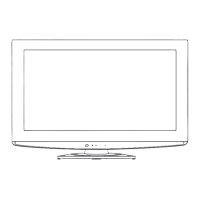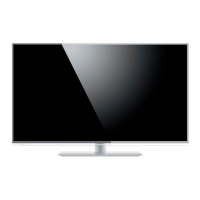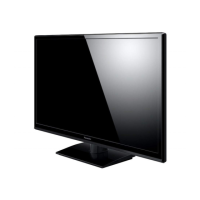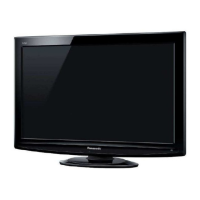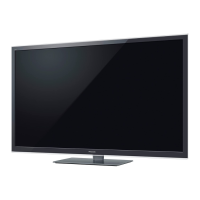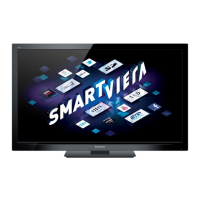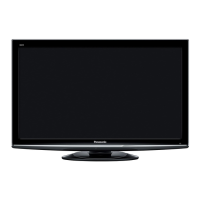
Do you have a question about the Panasonic VIERA TX-L32G10B and is the answer not in the manual?
| Screen Size | 32 inches |
|---|---|
| Resolution | 1366 x 768 |
| Display Type | LCD |
| HDMI Ports | 3 |
| USB Ports | 1 |
| Ethernet | Yes |
| Weight | 10 kg |
| HD Format | HD Ready |
| Aspect Ratio | 16:9 |
| Contrast Ratio | 1000:1 |
| Brightness | 500 cd/m² |
| Response Time | 8 ms |
| Viewing Angle | 178° |
| VGA Port | Yes |
| SCART Ports | 1 |
| Component Video Input | Yes |
| Composite Video Input | 1 |
| Headphone Jack | Yes |
| Digital Tuner | Yes |
| Analog Tuner | Yes |
| Sound Output | 20 W |
| Speaker Type | 2 speakers |
| Standby Power Consumption | 0.3 W |
Guides through the automatic channel search and initial setup.
Guides on retuning, creating favorite lists, and skipping channels.
Provides solutions to common problems encountered with the TV.
Provides a comprehensive guide to the remote control's buttons and their functions.
Illustrates connecting a satellite dish or terrestrial aerial to the TV.
Initiates the TV setup by powering on and starting the channel scan.
Instructions for turning on the TV and selecting the input mode (TV, freesat, etc.).
Details methods for selecting TV channels using the remote control.
Guides on navigating the TV Guide in portrait and landscape layouts.
Details how to view the TV Guide for DVB and Analogue channels.
Guides on setting timer programs for recording from the TV Guide.
Explains how to record programs using information from the TV Guide signal.
Describes digital teletext services, including graphics and text layout.
Instructions for connecting external devices like VCRs and DVD players.
Guides on selecting the correct input source for external devices.
Explains how to set codes to operate connected equipment with the TV remote.
Guides on accessing and navigating the TV's main menu structure.
Details how to adjust settings using slide bars and alternative choices.
Details available picture settings like Viewing Mode, Contrast, and Color.
Explains available sound settings like Mode, Bass, Treble, and Audio Description.
Details settings for freesat, DVB, analogue, and other satellite channel tuning.
Guides through the automatic setup process for freesat channels.
Details the automatic setup procedure for DVB channels.
Details the automatic setup procedure for Analogue channels.
Navigates to the menu for managing freesat channel tuning.
Navigates to the menu for managing DVB channel tuning.
Navigates to the menu for managing analogue channel tuning.
Navigates to the menu for managing other satellite channel tuning.
Details automatic or manual settings for IP address and DNS.
Details the procedure for resetting all TV settings to factory defaults.
Guides on setting up timer programs for recording directly from the TV menu.
Details the steps for setting program start time, date, and channel.
Guides on inserting SD card and selecting photos or movies.
Instructions for connecting a PC and selecting the PC input source.
Explains how to record the current program directly to a recorder.
Guides on connecting equipment and setting up VIERA Link.
Guides on performing direct TV recording using the VIERA Link menu.
Explains how to pause and resume live TV programs.
Guides on accessing menus of connected equipment using VIERA Link.
Details how to control connected equipment using the TV remote.
Explains how to control theatre speaker volume via the TV remote.
Illustrates connections for Internet, PC, DVD players, and amplifiers.
Explains HDMI interface, applicable features, and connection notes.
Covers PC connection, supported signals, and resolution information.
Guides on downloading and installing TV software updates.
Provides information on network connection requirements and setup.
Lists supported input signal formats for Component and HDMI terminals.
Details supported input signal formats for PC connections.
Addresses problems like white spots, noise, and no image display.
Solutions for sound problems and issues with freesat auto setup.
Helps resolve issues with no programs shown, weak signals, and channel tuning.
Solutions for chaotic, noisy, no image, or blurry/distorted screen images.
Troubleshooting interference, frozen images, and missing channels.
Solutions for unusual pictures or sound when connected via HDMI.
Details error messages related to PIN, network, and recording.
Lists technical details for power consumption, screen size, and audio output.
Details supported signals, terminal types, and physical dimensions.
